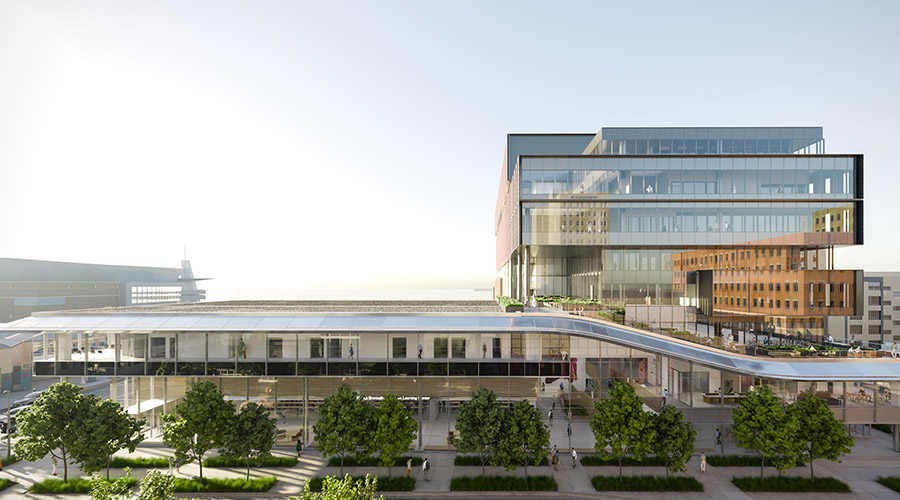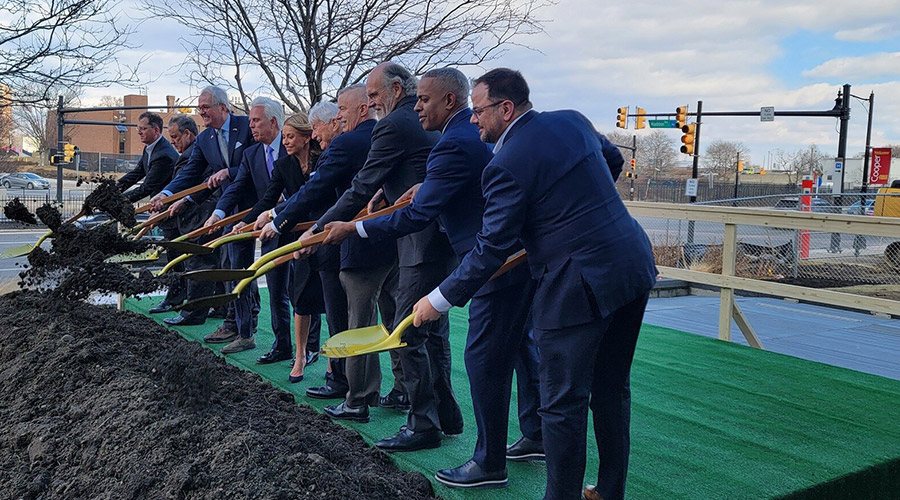According to a "Project Solution" article on the CBRE Healthcare website, the options for managing the furniture, fixtures, equipment, and technology (FFE&T) planning, procurement and installation process on a capital facility project are as numerous as there are health systems and hospitals.
Developing a plan that utilizes the appropriate mixture of internal resources and external expertise will be one of the most critical decisions ever made on any given project. In most cases, the FF&E portion of the Master Program Budget is the second highest line item next to construction. Not only is it essential to develop a plan, but sticking to it and the timeline associated with it will make all of the difference.
Most of the decisions associated with this selection will impact operational work flows and the patient experience. Implemented correctly, the procurement and installation process can save millions of dollars as well as eliminate stress and concern as the project nears completion. However, a flawed inefficient plan can be extremely costly, cause major delays to the overall schedule, and wreak havoc on the trust and support of employees and clinicians.
In this article, we will review the criteria for a successful FFE&T strategy, identify the pitfalls to avoid and discuss the specific elements of a FFE&T Management Plan.
Get help if you need it
When it comes to the “E&T” (equipment and technology) in FFE&T, management for activation and transition is typically handled in one of three ways:
• Internally, in silos with little discussion between planning teams on the best approach to manage information and activate the new facility.
• Internally, in an efficient manner and relevant planning teams communicate through a facility activation steering committee. The healthcare organization manages the receiving, warehousing, placement, and installation process by their in-house facilities team through an onsite storage facility.
• By various third party vendors, such as medical equipment planners, interiors firms, low-voltage/IT consultants, etc. A third party warehouse is selected to manage the receiving process for all new FFE&T to ensure an orderly delivery and installation process. The healthcare organization may coordinate the overall schedule internally or they may look to an outside consulting firm or Activation Consultant to manage all of the vendors, as well as the entire process to ensure an efficient and cost effective transition.
In many instances, there has been great success in hiring a Medical Equipment Planning expert to develop, organize, and sometimes order all necessary medical equipment. Quite often, healthcare facilities use their internal team to manage the entire equipment process. Unfortunately, in most cases, the team becomes overloaded trying to balance the needs of the existing campus and employees versus the needs of the new facility, ultimately crippling this part of the process. Hospital purchasing groups are built for standard, routine purchases. A huge, capital project is NOT routine. The added volume and necessary timing of the purchase and delivery is different. By not properly coordinating the delivery and installation of certain types of equipment, the project could be subject to costly delays in the construction sequence. Luckily, Medical Equipment Planners are able to take much of that burden off of the internal team and be the liaison between them, the client, the Architect and the Construction Manager. This way the Medical Equipment Planners can ensure each and every last piece of equipment purchased for the new hospital is accounted for, installed on time, and properly fits in its future location.
Medical Equipment Planners can also prove to be extremely valuable when it comes to managing new versus existing equipment. When moving into a new facility, it would be much easier if the plan was to purchase all new equipment. However, this is rarely the case. Barriers can arise when coordinating the relocation of existing equipment. Beginning as early as two years prior to move, a Medical Equipment Planner can assist in developing an inventory of what stays, what goes and what will be donated/discarded. Maintaining real time accountability of the existing equipment prior to the opening can be vital to understanding equipment gaps, replacement needs and breakage issues. And, inevitably, there will be existing equipment that does not integrate properly with new technologies and existing equipment.
Technology
When dealing with the technology aspect of a new facility, it has been noted that some of the most successful technology implementations occurred when healthcare facilities used a consultant to assist with the design and infrastructure efforts. This allows the internal team to be able to rely on their own employees for the purchasing, deployment and install/upgrades of applications for all end user devices. IT plays such an important role in dealing with End User Devices which include nurse call devices, phones, printers/faxes and computers; thus it is important to further examine the process, organization, and communication of these devices. In developing this strategy whether it is internal to the organization or outside help is secured, a strategy needs to be developed and integrated with the designer. This is a crucial aspect that often goes undefined until it is too late. This too can lead to costly field changes to retrofit the space in order to accommodate the equipment that has been ordered.
A year prior to the go-live date, the End User Device Team should be assembled and engaged. This team is responsible for creating a project plan that includes an inventory of existing devices as well as new devices and potential purchasing needs. In addition, location and placement for each device should be mapped. Installation times, training needs and an exchange plan for older laptops/desktops must be included. Creating an End User Device Plan early and then sticking to it after Substantial Completion and Certificate of Occupancy will ensure a smoother transition and eliminate unnecessary stress and frustration.
In conducting Post Move Assessments, almost every client contributes the majority of their stress to the lack of a concrete plan for End User Devices. Therefore, neglecting to create and communicate a plan early in the design and construction process can cause undue anxiety and tension that can be detrimental to meeting the go-live date.
Ideal scenario
In a perfect world, the activation of renovated or new healthcare space follows a seamless path from construction substantial completion through first move. The client and third party vendors work in harmony to develop a comprehensive facility activation plan, all FFE&T deliveries arrive at their scheduled times, all items fit neatly in their pre-determined locations, a thorough infection prevention program has been implemented and followed, and all FFE&T is accounted for in mint condition.
However, the perfect activation scenario is rarely experienced for a host of reasons. FFE&T may arrive days early and/or late causing confusion at the loading dock. In-house facilities teams must then juggle their day-to-day responsibilities with receiving and placing all Owner Furnished Owner Installed (OFOI) items associated with the project. This can be a significant burden and cause operational disruption to core business functions. Experience has also proven that this added responsibility may inhibit the ability to properly train staff in the new space and on the new systems.
The improper allocation of key resources can result in stress on the activation schedule and increase the cost of activation. A balanced FFE&T process is one where the client and the project manager develop a comprehensive planning process well in advance of construction substantial completion. This process includes the procurement manager(s), finance, medical equipment planner, IT/Telecom consultant, interiors firm, facilities manager, security, infection prevention, and the Activation Consultant (if managed externally). A process will be developed to manage all items from the creation of the initial purchase order through final sign-off in the new facility. This process will include the selection of a third party warehouse to receive, verify, store, deliver, install, and sign off on all OFOI purchased to complete the new space.
A thorough process will include the following steps:
• Develop comprehensive facility activation schedule
• Establish warehouse controls and client access
• Establish inventory control system
• Receipt and delivery reporting
• Determine FFE&T insurance requirements
• Item and piece count verification
• Delivery examination
• Develop reporting of goods damaged in transit and project claims process
• Develop delivery schedule for all FFE&T
• Conduct regular procurement planning meetings
• Develop an Owner’s Manual
• Remove debris
• Develop a vendor and facility access and security plan
• Coordinate BioMed and Infection Prevention
• Room-by-room sign off sheets
• Owner acceptance of all OFOI
• Project closeout
Finish strong
As hospitals plan for a new facility, FFE&T is often overlooked and delegated to a small in-house facilities team to manage without appropriate consideration of backfilling their day-to-day responsibilities. The success of activating renovated or new healthcare space will always be judged based upon how it finished. Was the building activated according to plan? Was everything in its proper place? Did all the new equipment work? Did the patient move go smoothly? Was the stress level on the organization acceptable? What additional dollars were spent to make up for the inefficiencies in execution? These final activities are the things that all personnel, patients and the public will remember as they begin experiencing the new space. Properly planning the management of the FFE&T will impact the success of staff training, final licensing, start date of the move schedule, as well as the patient experience. Therefore, it is imperative for any healthcare organization involved in a capital facility project to begin development of a comprehensive FFE&T plan at inception of the project to maximize success.
Stevie McFadden, is a consultant, CBRE Healthcare, Stevie.mcfadden@cbre.com.
Gary Wilkinson, is a principal consultant, CBRE Healthcare, gary.wilkinson@cbre.com
Read the article with enhanced graphics.

 The Top States for Pest Infestations
The Top States for Pest Infestations Ground Broken on Wichita Biomedical Campus Project
Ground Broken on Wichita Biomedical Campus Project Aligning Construction and Facility Activities to Minimize Problems
Aligning Construction and Facility Activities to Minimize Problems Cooper University Health Care Breaks Ground on 'Project Imagine'
Cooper University Health Care Breaks Ground on 'Project Imagine' 3 Employees Injured by Patient at Halifax Infirmary's Emergency Department
3 Employees Injured by Patient at Halifax Infirmary's Emergency Department